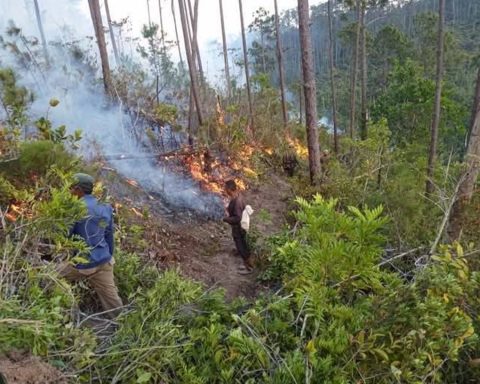SAN LUIS POTOSÍ, Mexico.- Health authorities in Sancti Spíritus warned that there has been an increase in pediatric patients with the coronavirus. dengueas the press acknowledged official this Thursday, September 19th.
Specialists from the Provincial Center for Hygiene, Epidemiology and Microbiology of that province revealed that in the last two weeks the number of serious cases diagnosed with dengue in that age group has increased.
“There are children who have come to hospital care with signs of alarmsuch as high fever, vomiting, diarrhea, dehydration, abdominal pain or bleeding gums, reasons for which they have required intensive care,” reported the local newspaper Escambray.
Despite the seriousness of the epidemiological situation on the island, health system managers indicated that there are “countless cases” of people who have been in bed for up to six days with very high fevers and have not gone to the doctor.
“Many have reached the brink of death and others are suffering serious after-effects,” they said, without mentioning the shortage of drugs and the terrible conditions in hospitals, reasons why patients prefer to stay at home.
Yurien Negrín Calvo, deputy director of the Provincial Center for Hygiene, Epidemiology and Microbiology, warned that “dengue and Oropouche are not passing through Sancti Spíritus; the environmental conditions of a tropical country like Cuba favor the proliferation of these arboviruses.”
That region, together with Las Tunas and Ciego de Ávila, showed an increase in the number of dengue cases and, as a consequence, raised the incidence rate from 5 to 15.5 per 100,000 inhabitants. Currently, Sancti Spíritus has been declared in the transmission phase.
Critical epidemiological panorama
The Ministry of Public Health of Cuba (MINSAP) reported a worrying increase in suspected cases of dengue.
According to the national director of Hygiene and Epidemiology, Francisco Durán, quoted by the official press, The most affected provinces are Havana, Matanzas, Camagüey, Holguín, Santiago de Cuba and Guantánamo. Currently, transmission of the virus is recorded in 12 localities, 41 municipalities and 46 health areas.
Durán stressed that, although most of the suspected cases remain under home admission, some patients have been hospitalized and serious cases have been treated. According to Cuban authorities, despite the gravity of the situationso far there have been no deaths associated with this disease. However, these statements differ from testimonies of the Cuban population.
There has also been a notable increase in suspected cases of Oropouche fever. The disease has been diagnosed in 15 provinces, 103 municipalities and 184 health areas, a significant increase compared to the previous week, when cases were recorded in 99 municipalities and 174 health areas.


















